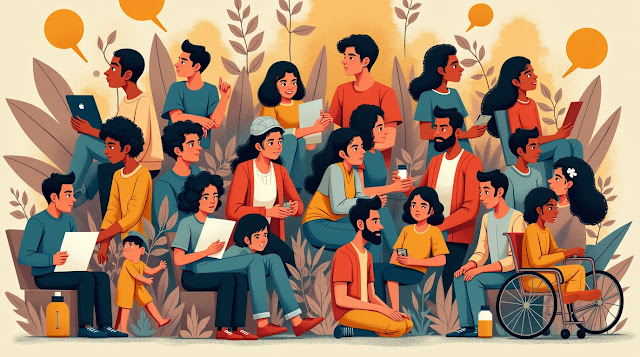**Understanding Human Behavior: A Complex Tapestry**
Human behavior is a captivating and perplexing subject of consider that has interested researchers, clinicians, sociologists, and rationalists for centuries. It envelops a wide extend of activities, contemplations, feelings, and responses that people show in different circumstances. Whereas human behavior can in some cases appear eccentric, it is affected by a complex transaction of variables that can be broadly categorized into natural, mental, and social impacts. To genuinely get it human behavior, one must look at these components and their interconnections.
Organic Influences
At the most fundamental level, human behavior is intensely molded by our science. Our hereditary cosmetics, brain structure, and hormonal frameworks all play pivotal parts in deciding how we carry on. For illustration, certain acquired characteristics can make people more inclined to hostility, calmness, extroversion, or self preoccupation. Neurotransmitters, such as dopamine and serotonin, essentially affect temperament and decision-making. When these chemicals are out of adjust, it can lead to mental conditions like discouragement or uneasiness, which in turn influence behavior.
The brain, as the control center of the body, is another key player. Distinctive locales of the brain direct particular behaviors. The amygdala, for occurrence, is included in preparing feelings like fear, whereas the prefrontal cortex makes a difference with thinking and decision-making. As a result, any disturbances to these areas—due to damage, infection, or formative factors—can lead to modifications in how a individual behaves.
Mental Influences
Psychological variables, counting identity, past encounters, and cognitive forms, are central to understanding behavior. Each person has a interesting mental cosmetics, which impacts their recognitions, feelings, and reactions to circumstances. For occasion, a individual who has experienced injury in childhood may show certain behaviors as a way of adapting with past harms, such as maintaining a strategic distance from social circumstances or creating believe issues.
Cognitive hypotheses propose that our considerations intensely affect our behaviors. Cognitive twists, such as overgeneralization or catastrophizing, can cause people to decipher occasions in a way that leads to maladaptive behaviors. In differentiate, positive considering and self-awareness can advance more beneficial behaviors and passionate responses.
Personality too plays a critical part in behavior. The Huge Five identity traits—openness, principles, extraversion, pleasantness, and neuroticism—are commonly utilized to depict individuals’ ordinary designs of considering, feeling, and acting. For occasion, an person tall in pleasantness may be more likely to lock in in prosocial behaviors, whereas somebody tall in neuroticism may display more on edge or cautious behavior.
Social Influences
Human behavior is too profoundly impacted by the social environment. From family flow to peer intelligent, social standards, and societal desires, social components play a major part in forming how individuals carry on. Social learning hypothesis, proposed by Albert Bandura, proposes that individuals learn behaviors by watching and copying others. This is especially apparent in children, who frequently mirror the behaviors of their guardians, caregivers, and peers.
Moreover, societal standards and social desires altogether impact behavior. In distinctive societies, behaviors that are worthy in one setting may be scowled upon in another. For illustration, in a few societies, collectivism and gather concordance are prioritized, whereas others may emphasize independence and individual achievement.
Social weights too contribute to behavior through instruments such as congruity and submission. Individuals frequently alter their activities to fit in with a bunch or to comply with specialist figures, indeed when it goes against their individual inclinations or convictions. This was broadly illustrated in tests by analysts like Solomon Asch and Stanley Milgram, where people were willing to adjust or comply in spite of potential negative consequences.
Conclusion
Human behavior is a multifaceted wonder that cannot be completely caught on by looking at any one figure in segregation. Instep, it is the result of an complicated interaction between organic, mental, and social impacts. By considering these zones, analysts proceed to disentangle the secrets of why we act the way we do, which has significant suggestions for making strides mental wellbeing, advancing positive social alter, and improving our understanding of ourselves and others.






0 Comments